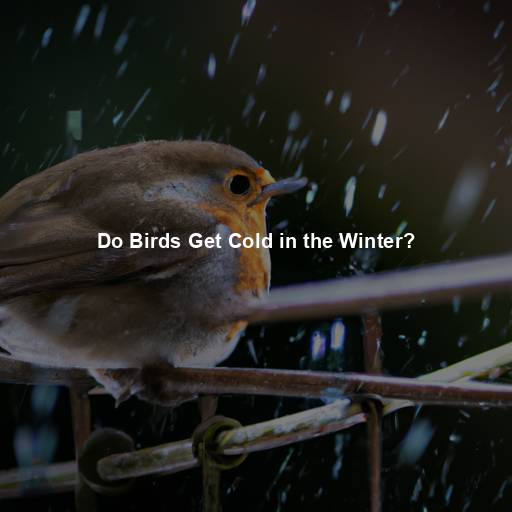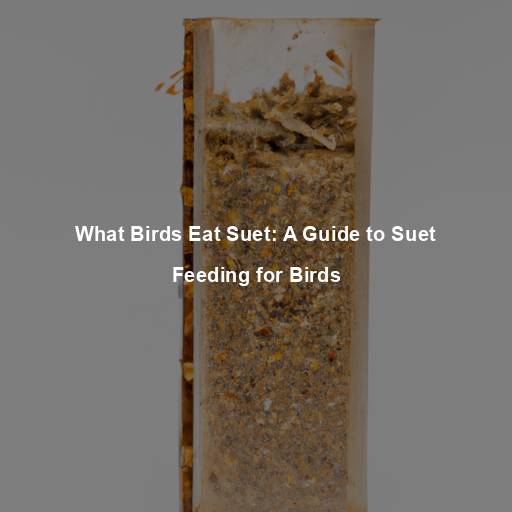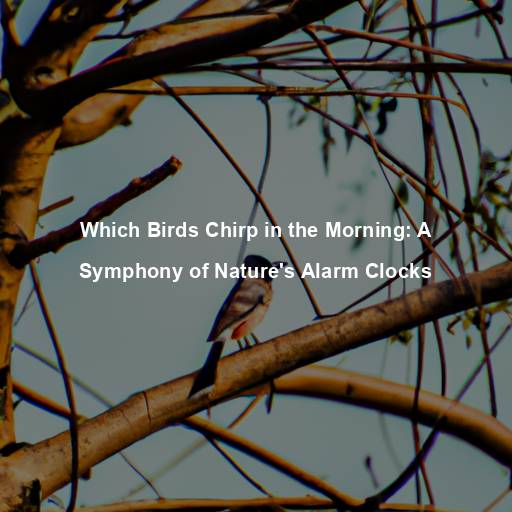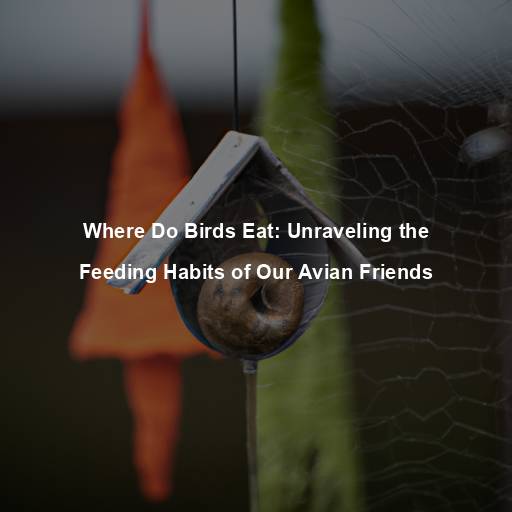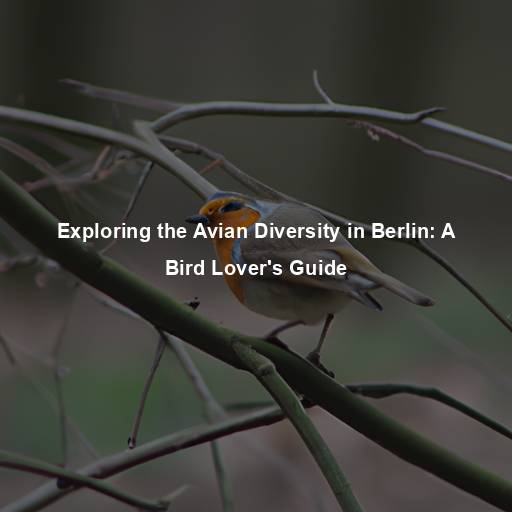Do Birds Get Cold in the Winter?
Last Updated on August 5, 2023 by Evan
Contents
- 1
- 2 Insulation: Feathers, the Perfect Winter Coat
- 3 Metabolic Adaptations: Keeping the Internal Fire Burning
- 4 Behavioral Adaptations: Seeking Shelter and Warmth
- 5 Migration: Escaping the Winter Chill
- 6 Cold-Weather Challenges: Adaptations and Limitations
- 7 The Fascinating World of Winter Birds
- 8 Celebrating the Resilience of Winter Birds
- 9 FAQs – Do Birds Get Cold in the Winter?
As winter creeps closer, we find ourselves layering up and cranking up the thermostat to fend off the frosty air. But what about our feathered friends? How do they navigate the chilly season? Do birds experience the same bone-chilling discomfort as we do?
The Remarkable World of Birds
Feathered marvels of nature, birds are an enigma with their awe-inspiring adaptations and their uncanny knack for survival in ever-changing landscapes. Their astonishing aerial acrobatics and their intricate nest-building artistry leave us spellbound. But it is when the frigid grasp of winter settles in that these avian wonders truly shine, revealing their exceptional strategies to brave the cold like no other creature can.
Insulation: Feathers, the Perfect Winter Coat
Birds have this incredible ability to endure freezing temperatures, and their secret lies in their extraordinary plumage. It’s truly remarkable how feathers act as a built-in insulation system, shielding these avian wonders from the harsh cold. Each feather is a masterpiece of design, with down feathers nestled close to the bird’s body, creating a cozy haven, while sleek contour feathers on the outer layer offer a sleek and stylish defense against the elements.
Down Feathers: Nature’s Thermal Insulation
Discover the fascinating world of avian insulation, where down feathers triumph as nature’s ultimate insulating marvels. Nestled beneath the majestic outer layer of contour feathers, these spongy wonders unfold a mesmerizing secret. Finessing the art of trapping air, down feathers conjure a luxurious cocoon of warmth, safeguarding the delicate avian frame against unforgiving icy realms. Witness the astounding resilience of these ethereal plumage, as they defy cold with each beat of the avian heart.
Contour Feathers: Protection from the Elements
Contour feathers, on the other hand, serve as a protective shield against the cold and other environmental factors. These feathers have a sleek structure and overlap one another, forming a barrier that prevents the loss of body heat. Additionally, birds have the ability to fluff up their feathers, increasing the insulating properties and creating a thicker layer of warmth.
Metabolic Adaptations: Keeping the Internal Fire Burning
Feathers, the unsung heroes of avian insulation, may not be the solitary defense against biting cold. Birds, with their uncanny metabolic prowess, have evolved creative strategies to create and preserve body warmth. These remarkable adaptations remain a perplexing marvel, showcasing nature’s genius in ensuring survival in chilly times.
High Metabolic Rates: Stoking the Fire
In the realm of metabolism, birds soar high above their counterparts, embracing a fiery vigor that sets them apart. Their fervent engine burns with an unrelenting intensity, generating a radiant warmth that defies the harshest of climates. As their diet becomes the fuel that ignites their metabolic inferno, these avian creatures triumphantly defy the chilling winds of the frigid world, enveloped in the enigmatic dance of energy and survival.
Shivering: A Quivering Strategy
In extreme cold, birds may resort to shivering as a means to generate heat. Shivering is a rapid muscle contraction and relaxation process that produces heat as a byproduct. By shaking their muscles, birds can raise their body temperature and ward off the cold.
Torpor: A Temporary Winter Slumber
Some bird species have the extraordinary ability to enter a state of torpor during the winter months. Torpor is a form of temporary hibernation where the bird’s metabolic rate decreases significantly, conserving energy and reducing heat loss. This adaptation allows certain birds to survive in extremely cold climates where food may be scarce.
Behavioral Adaptations: Seeking Shelter and Warmth
When it comes to navigating the chilly winter months, birds are true masters of survival. Not only do they possess remarkable physical and metabolic adjustments to combat the cold, but they also employ a multitude of behavioral strategies to stay cozy and bask in the warmth. These avian beings never cease to perplex us with their ingenious ways of braving the elements and finding solace during the frosty season.
Roosting: Safety in Numbers
As the winter nights fall upon us, an enchanting phenomenon takes flight. In the realm of nature’s grandeur, birds converge in mesmerizing roosts, forming a symphony of unity amidst the chilling winds. Wrapped in a tapestry of perplexity, these avian companions embrace the collective warmth, mastering the art of survival while mystifying onlookers. Within this celestial gathering, safety dances hand in hand with camaraderie, as they navigate the ever-present threat of predators, their wings interwoven in harmonious defense.
Seeking Shelter: Nature’s Hideouts
It’s truly awe-inspiring how birds have this perplexing knack for discovering havens amidst nature’s marvels—be it cozy tree hollows, lush foliage hideaways, or even adorable birdhouses crafted by humans. These sanctuaries serve as their go-to retreats, shielding them from frigid winds and preserving precious warmth. To add to their exceptional adaptive skills, certain avian species like the enigmatic Black-capped Chickadee cleverly employ all-natural insulation elements like moss and fur to create snug nests, effectively elevating their cozy factor.
Sunbathing: Catching Some Rays
On sunny winter days, you may spot birds perched with outstretched wings, basking in the sunlight. Sunbathing allows birds to absorb the sun’s rays and warm up their bodies. By strategically positioning themselves to catch the maximum amount of sunlight, birds can raise their body temperature and alleviate the effects of the cold.
Migration: Escaping the Winter Chill
In the realm of winter survival strategies, birds have been known to employ myriad techniques. However, there exists a fascinating alternative that some winged creatures choose to embark upon—an act that defies reason and embraces the uncharted. This enigma is none other than migration, an awe-inspiring spectacle where feathered beings embark on epic odysseys to seek respite in temperate lands. These intrepid travelers traverse daunting expanses, driven by primal instincts to elude the merciless clutches of winter and unearth haven in bountiful realms teeming with sustenance.
The Incredible Journey
Every year, with a sense of purpose that often leaves us humans awe-struck, birds embark on epic migration journeys that can span thousands of miles. In a world where our daily commute seems like a daunting task, these feathered wanderers navigate through unfamiliar territory, relying on a complex mix of nature’s cues such as the mysterious magnetic fields of our planet, celestial landmarks, and even visual cues that only they seem to comprehend. It’s no wonder that migration is not just a test of physical endurance, but also a perplexing marvel that leaves us questioning the limits of their energy reserves and the challenges they brave along the way.
Return of the Migrants
As the seasons change, migratory birds return to their breeding grounds to raise their young. This annual cycle of migration demonstrates the adaptability and resilience of these remarkable creatures. By timing their journeys carefully, birds can avoid the coldest months and ensure their survival and reproductive success.
High-Energy Foods: A Winter Menu
In the chill of winter, when nature’s bounty seems to retreat, the resilience of our feathered friends truly astounds. Their survival instincts kick into high gear as they seek out the fuel that will sustain them through the frosty days. Seeds, nuts, berries, and even the rich suet graciously offered by bird feeders become the lifesavers upon which these perplexingly adaptable birds depend. Laden with calories and essential fat, these nourishing morsels act as the very furnace that keeps their tiny bodies ablaze, warding off the icy grasp of the season.
Opportunistic Foraging: Making the Most of Winter Resources
Winter can be a real head-scratcher for our feathered friends, but boy, do they come prepared! These clever aviators have got some serious skills when it comes to sniffing out the best eats, even in the most frigid conditions. They’ve mastered the art of opportunistic foraging, combing every nook and cranny for hidden treasures like seeds and insects. And let’s not forget the Red-breasted Nuthatch, with its fancy beak that’s like a ninja tool for extracting seeds from cones.
Winter Flock Feeding: Safety in Numbers
Birds often form feeding flocks during the winter, where multiple species gather to search for food together. This behavior provides several advantages, including increased foraging efficiency and enhanced protection against predators. By working together, birds can locate and access food sources more effectively, improving their chances of survival during the colder months.
Cold-Weather Challenges: Adaptations and Limitations
While birds have evolved numerous strategies to cope with winter, they still face certain challenges and limitations when it comes to enduring extreme cold. Understanding these factors can shed light on the delicate balance between survival and the constraints imposed by harsh winter conditions.
Frostbite and Hypothermia: Constant Vigilance
Birds may be equipped with remarkable abilities to navigate through the skies and survive in diverse environments, but even they have their limits when it comes to icy conditions. In the face of extreme cold, our avian friends find themselves vulnerable to frostbite, particularly on their delicate feet, legs, and beaks. Furthermore, prolonged exposure to freezing temperatures poses the risk of hypothermia, as plummeting body temperatures can have dire consequences. Hence, birds must constantly remain vigilant, meticulously monitoring their body temperature and making a beeline for shelter when the weather takes a turn for the worse.
Limited Food Availability: A Struggle for Sustenance
Winter brings limited food resources for birds, especially in regions with harsh winters or during periods of heavy snowfall. Finding enough food to sustain their energy requirements can become challenging, and some bird populations may experience fluctuations or declines as a result. Conservation efforts that provide supplementary food sources, such as bird feeders, can play a crucial role in supporting bird populations during the winter months.
Predation: The Constant Threat
In the ever-changing dance of survival, birds face an unyielding challenge from their relentless predators, unfazed by the shifting seasons. When winter descends and the land echoes with deprivation, these feathered creatures find themselves gravely exposed, drawn together in a tapestry of vulnerability. Hunger becomes their tyrannical companion, forcing them to hover on the edge of danger. Desperately, they embrace the secrets of survival, forming protective alliances, concealing their fragile frames, and amping up their senses to a state of perpetual alertness.
The Fascinating World of Winter Birds
As the crisp air sets in and nature’s canvas transforms, the winter season reveals its enigmatic allure. For our feathered friends, this mystical time harbors a mixture of trials and triumphs. As if unfolding a tapestry of contradictions, some avian species embrace the frigid embrace of frost, while others embark on epic journeys to seek sanctuary in more bountiful lands. Brace yourself for a captivating expedition as we unravel the enigmatic world of winter birds and unveil the secrets of their awe-inspiring adaptations.
Snowy Owl: Masters of Arctic Survival
Snowy Owls are iconic symbols of the Arctic tundra, perfectly adapted to survive in extreme cold. Their thick plumage, consisting of both down and contour feathers, provides exceptional insulation. These majestic birds also have specialized facial feathers that protect their eyes from the glare of the snow. Snowy Owls are opportunistic hunters, relying on their incredible eyesight and sharp talons to capture prey in their icy habitat.
Black-capped Chickadee: Resourceful and Resilient
The Black-capped Chickadee is a small songbird that exhibits remarkable adaptability to winter conditions. These resilient birds have the ability to lower their body temperature during cold nights, conserving energy while maintaining their survival. They cache food during the fall, stashing seeds and insects in hidden locations, which they rely on during the winter months. Black-capped Chickadees also have the fascinating ability to generate heat by burning body fat—a strategy known as facultative hypothermia.
Emperor Penguin: Masters of Antarctic Life
Braving the unforgiving winter landscape, the remarkable Emperor Penguins reign as the indomitable conquerors of Mother Nature’s icy realm. With an ingenious combination of their insulating plumage, a strategic layer of blubber, and their unique communal huddling rituals, these resilient flightless birds defy the elements like no other. United in their battle against the bone-chilling Antarctic winds, these fascinating creatures harness the power of collective warmth, rotating their positions within a bustling huddle to shield themselves from the frigid temperatures. It is through their awe-inspiring adaptation and unwavering solidarity that Emperor Penguins rise victorious in the face of nature’s relentless challenges.
Common Redpoll: Winter Wanderers
The humble Common Redpoll, a petite finch, captivates with its enigmatic winter migrations that border on the extraordinary. With breeding grounds nestled in the northern corners of North America and Eurasia, these marvels of nature embark on daring, long-distance journeys to seek refuge in more forgiving climates during the winter months. Their nomadic tendencies serve as a beacon of adaptability, enabling them to track down precious food sources across varied, ever-changing landscapes. A true testament to survival in the face of adversity, the Common Redpoll continues to bewilder and enthrall all who encounter its perplexing ways.
Celebrating the Resilience of Winter Birds
Winter may bring cold and challenging conditions, but it also offers an opportunity to appreciate the remarkable adaptations and resilience of birds. By understanding the strategies birds employ to stay warm and find sustenance, we can better appreciate their tenacity and the role they play in our ecosystems. So, the next time you spot a bird fluttering through a snowy landscape or hear its melodic song on a frosty morning, take a moment to marvel at the wonders of these incredible creatures and their ability to thrive in the face of winter’s chill.
FAQs – Do Birds Get Cold in the Winter?
Do birds feel cold during the winter months?
Birds, just like us, are not immune to the chill of winter. Despite their feathery insulation, the biting cold can take its toll on their delicate existence. While some avian wonders have evolved to face the frost head-on, there are limits to their resilience. Amazingly, these feathered marvels possess internal systems that aid in thermoregulation, yet they too seek refuge in snug shelters, forage for sustenance, and quench their thirst to ward off the unforgiving freeze.
How do birds stay warm in the winter?
As the winter chill descends, birds unveil their enigmatic strategies to brave the cold. One such mysterious tactic involves the art of feather puffing, a mesmerizing spectacle where birds inflate their plumage with mesmerizing air pockets. These air-filled wonders serve as secret insulators, keeping the warmth locked against their tiny bodies, while simultaneously increasing their surface area, defying the frigid temperatures. Not content with these extraordinary feats, some avian marvels like chickadees astound us with their food storage techniques during the summer, saving energy by lowering their body temperature under the starlit sky. Seeking refuge in tree hollows, roost boxes, or lush thickets, our feathered friends mystify us with their uncanny ability to seek shelter from the treacherous winds, maintaining a cozy sanctuary amidst the perplexing winter wonderland.
Are all bird species equally tolerant of the cold?
When it comes to weathering the cold, not all birds are cut from the same feathered cloth. Mother Nature, in her infinite wisdom, has bestowed upon our avian friends a tapestry of adaptations to cope with the whims of various climates. Take for instance the penguins, who with their insulating layers and icy resilience, dance with delight in extremities that freeze our very souls. Yet, there are those migratory souls, seeking sanctuary in warmer realms as winter’s icy embrace threatens their delicate constitution. To truly fathom the enigmatic ways of these feathered beings, we must delve into their natural habitats and peculiar adaptations, unraveling the essence of their wintry defiance.
How can we help birds endure the cold in winter?
As the colder months approach, many of us find ourselves wondering how we can best support our feathered friends through this challenging time. It’s no secret that winter can be a tough season for birds, with limited food sources and harsh conditions to contend with. Thankfully, there are several ways we can help these resilient creatures thrive. One of the simplest and most effective ways is by offering them a consistent supply of high-energy foods. This can be achieved by setting up bird feeders and filling them with suet and seeds. Providing fresh water is equally important, as birds need water not only for hydration but also to keep their feathers clean. Consider investing in a heated birdbath or simply replenishing their water source frequently. When it comes to shelter, creating suitable spaces for birds to find respite during cold nights is essential. Birdhouses and brush piles can offer them protected areas to roost and stay warm. It’s crucial to ensure that these shelters are well-maintained and properly insulated to provide maximum comfort. By taking these steps, we can contribute to the well-being of our avian companions and witness their unwavering spirit in the face of adversity.
Is it harmful to feed birds during winter?
Feeding birds during winter is generally not harmful. In fact, providing supplemental food can significantly benefit birds during this time when natural food resources are limited. However, it is crucial to feed birds responsibly by using appropriate feeders and offering suitable food items. Avoid using moldy or spoiled seeds, as they can cause harm to the birds. Additionally, regular cleaning of feeders is essential to prevent the spread of diseases among them. Following these guidelines will help ensure that feeding birds in winter remains a positive and beneficial practice.

